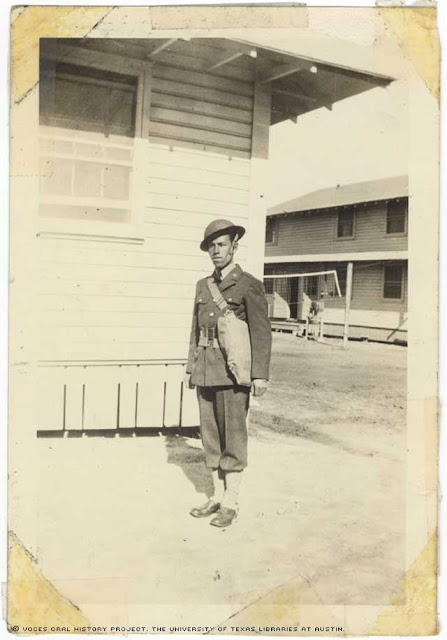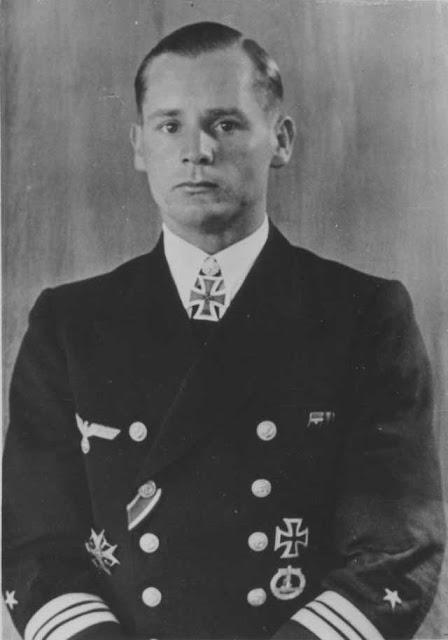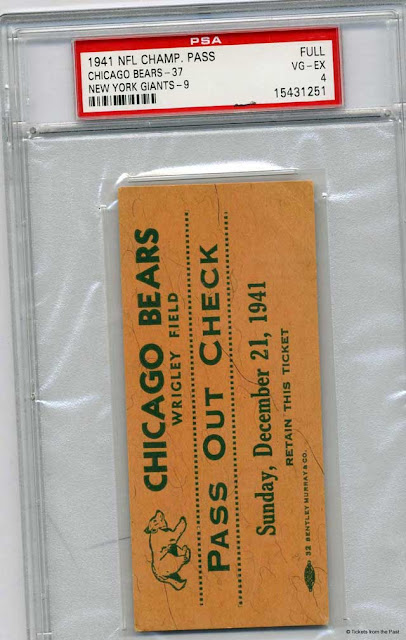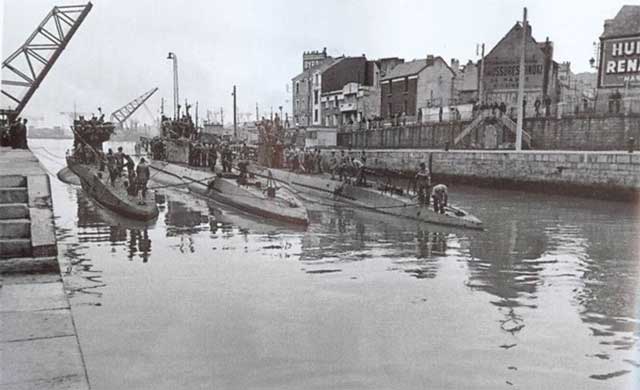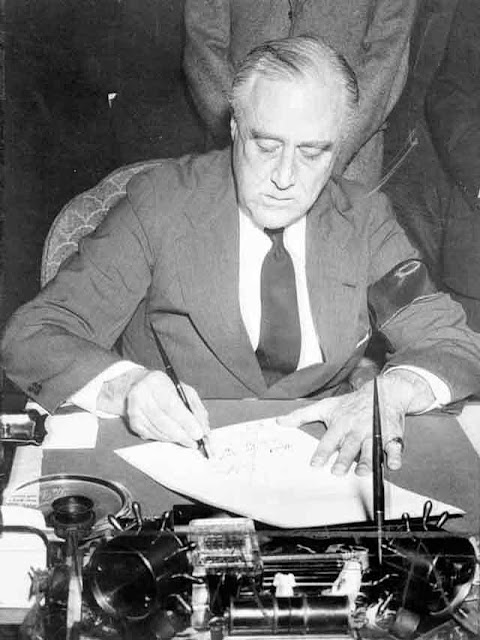Monday 8 December 1941
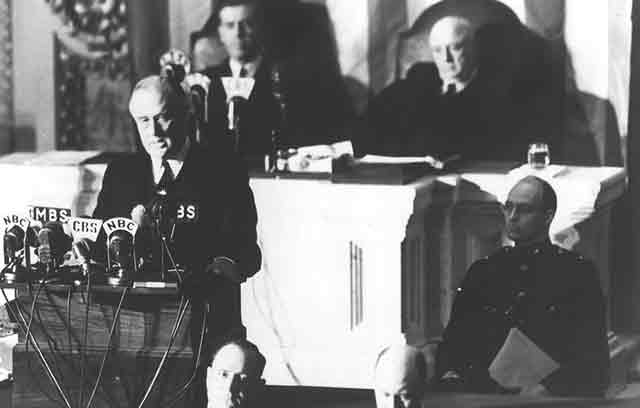 |
| President Roosevelt as he delivers his "Day of Infamy" speech, 8 December 1941. |
US/Japanese Relations: Following the surprise Japanese attack on the United States fleet base in the territory of Hawaii, on
8 December 1941 the United States and Japan both formally declare war on each other. The Japanese government has its statement printed on the front pages of all Japanese newspapers, while the United States Congress votes for war by 82-0 in the Senate and 388-1 in the House of Representatives (pacificist Jeannette Rankin, who also voted against entry into World War I, is the only no vote). The United Kingdom declares war on Japan nine hours after the US declaration, while Japan's declaration includes the British Empire.
 |
| President Roosevelt delivers his "Day of Infamy" speech, 8 December 1941. |
The United States declaration of war follows a speech delivered by President Franklin D. Roosevelt (FDR) to a joint session of the US Congress by about one hour. FDR's speech, commonly called the
Infamy Speech or the Pearl Harbor Speech (see text below), runs for about seven minutes and becomes one of the most quoted and referenced speeches in world history primarily for its opening line, "a date which will live in infamy." Several other nations, including New Zealand, Costa Rica, the Dominican Republic, El Salvador, Haiti, Honduras, the Dutch government-in-exile and Nicaragua also declared war on Japan, primarily as a show of solidarity with the United States and Great Britain.
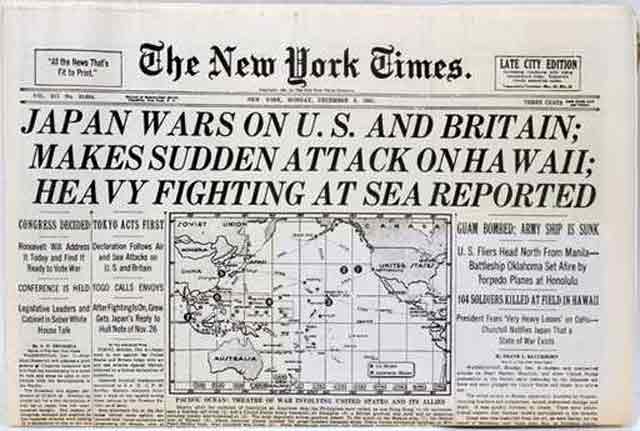 |
| The NY Times on 8 December 1941 highlights "heavy fighting at sea" that is non-existent. In fact, there is virtually no fighting at sea anywhere in the Pacific. |
Battle of the Pacific: Following Japanese landings at Khota Baru and elsewhere on the Malay Peninsula, Japanese forces of the 15th Army land at various points along the Kra Peninsula in the early morning hours of 8 December 1941. The Imperial Japanese Army (IJA) 33rd Division under the command of Lieutenant-General Shōzō Sakurai and the IJA 55th Division under Lieutenant-General Hiroshi Takeuchi of the 15th Army move across the border from French Indochina into Thailand at Tambon Savay Donkeo,, Athuek Thewadej District (Russei) of Battambang. This follows a two-hour ultimatum posed by the Japanese government on Thailand to which they receive no response. In addition, the IJA 143rd Infantry Regiment lands troops at Chumphon, but the Thai Army opposes this landing vigorously (unlike elsewhere) untold ordered to stand down in the afternoon. There also are landing at Nakhon Si Thammarat, Prachuap Khiri Khan, Samut Prakan, Singora, Pattani, and Surat Thani, along with the Japanese Air Force bombings of selected targets in Bangkok and Don Muang. There is a total ceasefire by the afternoon which stops all fighting. The two governments then work on an official Armistice, with Premier Plaek Phibun (Phibunsongkhram) claiming that the entire invasion had been pre-arranged in secret prior to the Japanese invasion between the two governments.
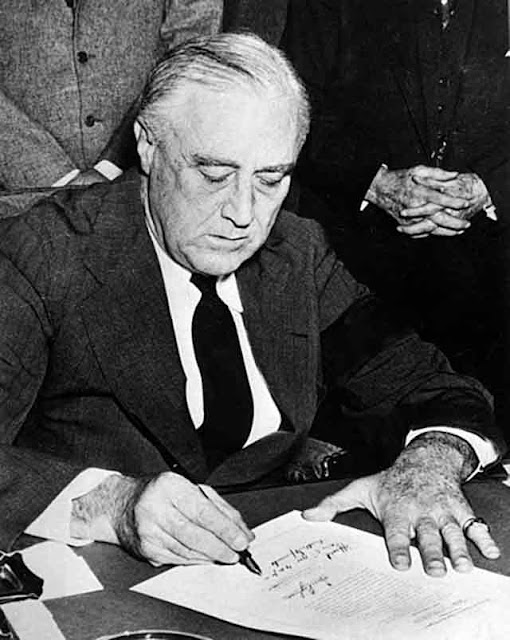 |
| President Roosevelt signs the declaration of war on the Empire of Japan, 8 December 1941. |
The Japanese objective on the Malay Peninsula obviously is the British fortified port of Singapore. Japanese bombers of the Mihoro Air Group based at Thu Dau Mot in southern French Indochina attack the city and nearby airfield before dawn, killing 61 people. Royal Navy battleship HMS Prince of Wales and battlecruiser Repulse are in the harbor, but they are undamaged. The Japanese do not lose any planes in this attack, and the British (especially British area commander Lieutenant General Arthur Percival) are surprised that the Japanese bombers have sufficient range to even make it to Singapore.
 |
| Life magazine has the extraordinary good fortune of having planned to feature Douglas MacArthur on the cover of its 8 December 1941 edition. |
There are Japanese landings and attacks elsewhere in the Pacific Theater as well
:
- The 14th Army of the IJA lands at tiny Batan Island off of Luzon.
- Japanese aircraft based on Saipan bomb the United States base on Guam.
- 36 Japanese Mitsubishi G3M3 medium bombers flown from bases on the Marshall Islands attacked Wake Island, destroying 8 of 16 F4F-3 Wildcats that had just arrived at the island.
- The Japanese 21st, 23rd and the 38th Regiments under the command of Lieutenant General Takashi Sakai attack British, Canadian, Indian, as well as the local Hong Kong Chinese Regiment, and the Hong Kong Volunteer Defence Corps in Hong Kong.
- Two Japanese destroyers shell Midway Island.
The Japanese also have designed on the Dutch East Indies (Indonesia), which has oil fields that are one of their top objectives. However, the Dutch Navy under Admiral Karl Doorman must be neutralized before landings can be achieved, and it lies beyond the range of Japanese bombers.
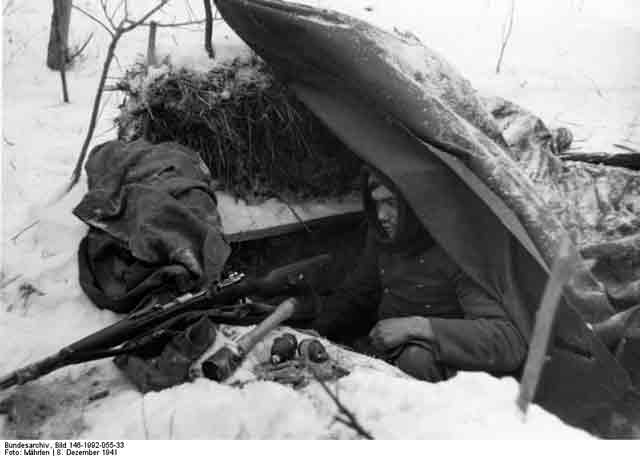 |
| German soldiers at Korjakowa, about 66 km southeast of Moscow, huddle against the chill, 8 December 1941 (Mährlen, Federal Archive Picture 146-1992-055-33). |
Eastern Front: The Red Army offensive around Moscow that began on 5/6 December 1941 shows no signs of abating. Always concerned about prestige and world opinion, Adolf Hitler uses the global distraction created by the Japanese attacks in the Pacific Theater to end Operation Typhoon. He issues
Fuehrer Directive No. 39, which blames this on "The severe winter weather which has come surprisingly early." The Wehrmacht forces all around Moscow begin an orderly retreat, with those in the northwest along the Klin-Kalinin railway line under the most pressure. The weather makes the retreat incredibly difficult because the extreme winter temperatures disable many vehicles, forcing the Germans to abandon huge quantities of equipment. One German corps in General Guderian's Second Panzer Army reports 1500 frostbite cases, with 350 requiring amputations. As one unit retreats, it uncovers the flanks of other units, which also must retreat, so the process causes a general retreat all along the line even if some positions have good defensive qualities.
 |
| Some German soldiers on the Eastern Front near Molwoitzi lay a field radio cable using a Panji sled, 8 December 1941 (Fenske, Federal Archive Picture 101I-002-3362-13). |
Holocaust: The Rumbula Massacre near Riga, Latvia concludes. About 25,000 victims, predominantly Latvians from the Riga Ghetto and the rest Germans brought to the vicinity by train, are exterminated by Einsatzgruppe A with the support of Arajs Kommando and other Latvian auxiliaries. There are a few feeble attempts to delay or hinder the massacre by Wehrmacht functionaries which are disregarded. With the Ghetto now largely cleared, the German authorities in Germany step up their efforts of transporting future victims east by rail to fill it up again.
 |
| The headline of the Honolulu Star-Bulletin on 8 December 1941 is full of war rhetoric but very short on details. Part of the US Pacific Fleet (the part that has not been sunk, that is) certainly is at sea, but there is no "counter-offensive" anywhere. |
American Home Front: The America First Committee begins winding up its activities. It releases a statement from leading spokesman Charles Lindbergh:
We have been stepping closer to war for many months. Now it has come and we must meet it as united Americans regardless of our attitude toward the policy our government has followed. Whether or not that policy has been wise, our country has been attacked by force of arms and we must retaliate.
There are long lines at U.S. military recruitment centers across the country. Lindbergh himself will seek to be recommissioned in the USAAF. However, the Secretary of War, Henry L. Stimson, will decline the request on instructions from the White House. Lindbergh instead will work as a consultant to military equipment manufacturers and see unofficial action in the Pacific.
Glenn Miller and his Orchestra return to work as usual on Monday morning despite the war news. They record "Moonlight Cocktail" with vocals by Ray Eberle and The Modernaires, "Moonlight Cocktail" goes on to hit No. 1 on February 28, 1942, and stays there for ten weeks - longer than any other Glenn Miller single. The song had been around since 1912 when Charles Luckeyeth Roberts composed it. James Kimball "Kim" Gannon added the lyrics.
 |
| A United States Marine Corps recruiting station on 8 December 1941. |
DAY OF INFAMY SPEECH
Yesterday, December 7, 1941 — a date which will live in infamy — the United States of America was suddenly and deliberately attacked by naval and air forces of the Empire of Japan.
The United States was at peace with that nation, and, at the solicitation of Japan, was still in conversation with its government and its Emperor looking toward the maintenance of peace in the Pacific.
Indeed, one hour after Japanese air squadrons had commenced bombing in the American island of Oahu, the Japanese Ambassador to the United States and his colleague delivered to our Secretary of State a formal reply to a recent American message. And, while this reply stated that it seemed useless to continue the existing diplomatic negotiations, it contained no threat or hint of war or of armed attack.
It will be recorded that the distance of Hawaii from Japan makes it obvious that the attack was deliberately planned many days or even weeks ago. During the intervening time the Japanese Government has deliberately sought to deceive the United States by false statements and expressions of hope for continued peace.
The attack yesterday on the Hawaiian Islands has caused severe damage to American naval and military forces. I regret to tell you that very many American lives have been lost. In addition, American ships have been reported torpedoed on the high seas between San Francisco and Honolulu.
Yesterday the Japanese Government also launched an attack against Malaya.
- Last night Japanese forces attacked Hong Kong.
- Last night Japanese forces attacked Guam.
- Last night Japanese forces attacked the Philippine Islands.
- Last night the Japanese attacked Wake Island.
And this morning the Japanese attacked Midway Island.
Japan has therefore undertaken a surprise offensive extending throughout the Pacific area. The facts of yesterday and today speak for themselves. The people of the United States have already formed their opinions and well understand the implications to the very life and safety of our nation.
As Commander-in-Chief of the Army and Navy, I have directed that all measures be taken for our defense, that always will our whole nation remember the character of the onslaught against us.
No matter how long it may take us to overcome this premeditated invasion, the American people, in their righteous might, will win through to absolute victory.
I believe that I interpret the will of the Congress and of the people when I assert that we will not only defend ourselves to the uttermost but will make it very certain that this form of treachery shall never again endanger us.
Hostilities exist. There is no blinking at the fact that our people, our territory and our interests are in grave danger.
With confidence in our armed forces, with the unbounding determination of our people, we will gain the inevitable triumph, so help us God.
I ask that the Congress declare that since the unprovoked and dastardly attack by Japan on Sunday, December 7, 1941, a state of war has existed between the United States and the Japanese Empire.
 |
| Fire engine ladders are used to create a "V for Victory" symbol in front of the United States Capitol building, 8 December 1941. |
December 1941December 1, 1941: Hitler Fires von RundstedtDecember 2, 1941: Climb Mount NiitakaDecember 3, 1941: Hints of Trouble in the PacificDecember 4, 1941: Soviets Plan CounteroffensiveDecember 5, 1941: Soviets Counterattack at KalininDecember 6, 1941: Soviet Counterattack at Moscow BroadensDecember 7, 1941: Japan Attacks Pearl HarborDecember 8, 1941: US Enters World War IIDecember 9, 1941: German Retreat At MoscowDecember 10, 1941: HMS Prince of Wales and Repulse SunkDecember 11, 1941: Hitler Declares War on USDecember 12, 1941: Japanese in BurmaDecember 13, 1941: Battle of Cape BonDecember 14, 1941: Hitler Forbids WithdrawalsDecember 15, 1941: The Liepaja MassacreDecember 16, 1941: Japan Invades BorneoDecember 17, 1941: US Military ShakeupDecember 18, 1941: Hitler Lays Down the LawDecember 19, 1941: Brauchitsch Goes HomeDecember 20, 1941: Flying Tigers in ActionDecember 21, 1941: The Bogdanovka MassacreDecember 22, 1941: Major Japanese Landings North of ManilaDecember 23, 1941: Wake Island Falls to JapanDecember 24, 1941: Atrocities in Hong KongDecember 25, 1941: Japan Takes Hong KongDecember 26, 1941: Soviets Land in the CrimeaDecember 27, 1941: Commandos Raid NorwayDecember 28, 1941: Operation Anthropoid BeginsDecember 29, 1941: Soviet Landings at FeodosiaDecember 30, 1941: Race for BataanDecember 31, 1941: Nimitz in Charge2020


